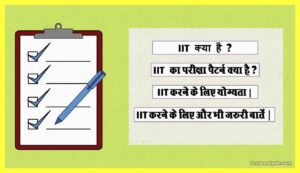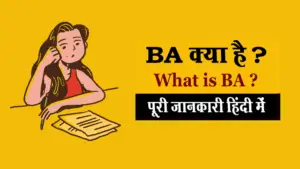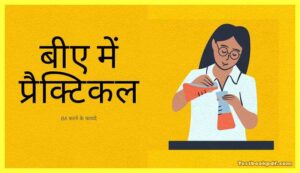Attention in Psychology Pdf (Part-1)
Today I will begin to talk to you Through this article about a mental process called attention, Attention in Psychology Pdf (Part-1) Another fascinating cognitive process is “Attention”. We talk about attention in our day-to-day affairs but less do we know about its mechanism. This lecture is about visual attention, it starts with the preliminary definitions and focuses on visual search (Feature and Conjunction Search). We will also talk about various theories of visual search, viz., Feature-Integration Theory, Similarity Theory, and Guided Search Theory.
We have been talking now about the sensation we have been talking about the perception the variety of uses of perception, perception being used for object recognition perception being used for visual interaction with the environment we also talked in the more recent lectures about the auditory perception we talked about theories of speech perception we talked about the physiology of the ear and such and in a broad sense what I have done till now in this course is given you an idea about what are the sensory processes and how do we get information from these sensory processes I have also talked to you about how do you convert information from these sensory sources and work upon them in order to let us say interact effectively with the environment.
for example, reach towards a cup and grab it for a drink out of it or say for example recognize the shape of something recognize the color of something and say for example if you’re driving in a street how do you do that what is the kind of information you are using there we have talked about all of these things and obviously there was scope for talking about other sensory modalities as well but given that vision and audition have received the most amount of attention from cognitive scientists and given the scope of the current course that I am taking I limited this to visual and auditory perception only but one of the questions and I hope you must be wondering about this as well is what really helps us gain information from these sensory modalities if you see yourself in this world and will imagine yourself walking in a particular park going around in a busy then you will imagine that the kind of sensory input that we are getting all the time is too overwhelming.
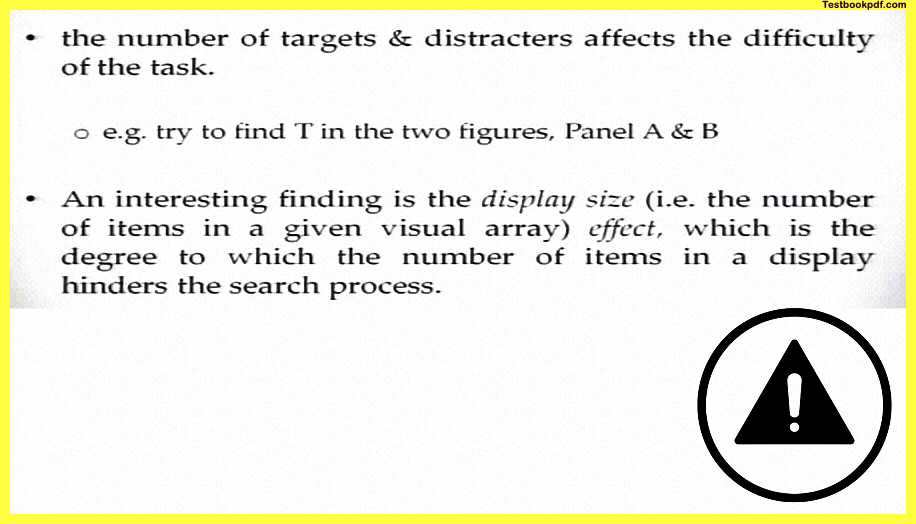
So at any point in time, you are actually your senses are actually working overtime to get in all different kinds of information that are possible all kinds of information that you are collecting from the environment even if you are just awake and just looking at things in your room you are looking at a lot of things your visual perception is giving you a lot of information imagine also if you’re living.
for example, you’re standing on a balcony somewhere you are also experiencing too many different kinds of noises too many voices may be some conversational voices maybe some songs are being played in the neighborhood maybe there is just traffic, and that noise you are hearing you might be said for example even party to some kind of odors or smells that are around maybe there is a nice breakfast being prepared somewhere something like that you’re touching things you’re feeling all those kind of things.
so what I’m trying to impress upon you at this point in time is that there is certainly a lot of sensory information that is constantly being bombarded on us as different kinds of stimuli as very rich stimuli.
Now the problem with the system, for example in such a scenario the problem that appears in front of us and that needs to be resolved because we can actively and meaningfully engage with the environment is which of these information do we really attend to and process further and which of the information that we kind of let go the main purpose of this mental and cognitive function called attention.
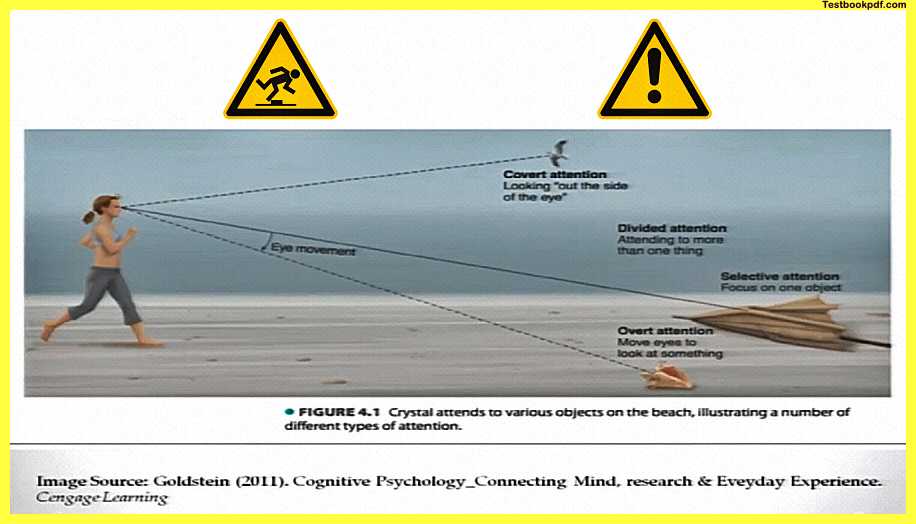
Attention
Attention is basically to resolve this dilemma you are constantly being bombarded with visual sensory information auditory sensory information olfactory and gusty olfactory sensory information you are doing a lot of sensory processing all the time but you if but if you imagine it is not that all of this information at the same time is being processed in your head most of the time you are only selecting or working on or thinking about a subset of that information in this current chapter we will be talking about our ability to actually select some of that information and let some of the other information slightly live on the background these phenomena which allow us to do this is called attention.
The cocktail party effect
there are some key questions one can ask if we are to talk about attention if we are to discuss in more detail about attention and that we will certainly do in the course of the next few lectures before I talk to you in more detail about these let us try and look at these questions first the first question that i would like to put forth is is it actually possible to selectively focus on one object or one event or two objects or two events while so many others are simultaneously going on are we actually doing that say for example there were these famous phenomena called the cocktail party effect.
wherein you are in a busy conversation in a very dense party and a lot of people are there and they are talking and those kinds of things but suddenly somebody in some conversation maybe 50 meters away from you mentions your name and you quickly orient towards that place maybe you are you quite interested in you go and see what is it they are talking about me you get curious how did you notice that this person was taking your name in the first place you were in gross in a particular conversation this person who mentioned your name is standing 50 meters away from you how did you still get it one of the possibilities is that you might still be attending this information while this information is still not in your primary focus you can imagine attention or you can imagine this sensory input as part of your work desk.
So what is happening is you have lot of items you have probably a lot of files maybe some things need to be signed some things you need to write all of that information is in your work desk when you are say for example sitting and you want to work for a given period of time how do you start with it how do you start working and moving ahead with the job so you select one aspect of the job you select one part of the job you work on it push it aside bring another one then you work on it push it push it aside and bring another one probably attention is also helping us do the same it is helping us prioritize the amount of sensory information that we are getting and also helping us say for example and we’ll talk about those modalities how does how can we prioritize this information but helping us select some information over others so that we can in a sense meaningfully interact with that information with that so kind of stimulus and then once that is done we kind of push it at the background and pick up another information.
Now the cocktail party effect is a good example of the fact that whatever we are not working on at the moment is also not completely unattended it’s not that you are not aware of those the presence of those kinds of stimuli at all you’re certainly aware of those the presence of those kinds of stimuli may be up to a particular level once they would cross a particular threshold they will grab your attention and you will again maybe prioritize them work up work upon them and engage with them so attention is that phenomena that will help you do this it will help you prioritize the kind of sensory interaction you will have with the environment taking a few things to work on and then finishing that and then moving on the other things.
Now another question that can be asked is what are the conditions under which you can do this selection i was referring to the cocktail party phenomena what are the conditions about these particular information or stimuli that will help you select them over the other say for example you have five major files on your desktop and you want to work on each of them what will help you decide that which is the file you open first and which is the file you work on first and then how is this ranking going to be organized what are these factors do you decide or does the environment help you decide what is this selection process and how is this prioritizing prioritization going to happen this is something which is also a very important question in attention if you want to do attention research with attention if you want to understand attention as a cognitive phenomena you would have to ask these kind of questions and you will see that there have been loads of researchers that have actually asked these questions another kind of question.
What does research on attention tell us about multitasking?
So you might be aware and obviously, it happens with all of us that we are not only selecting some information and working on it once and finishing it and then moving on to other information we are all also sometimes working on two things maybe sometimes three things simultaneously if you’re talking to somebody on phone does not mean that you’re not really doing something with your laptop as well if you say for example to the, unfortunately, people try and do this while driving, etc as well when they are talking on the phone they are texting they are also I mean they are also sometimes I mean driving.
Those can be really hazardous and will probably in this chapter talk about those kinds of questions as well and how you can really avoid and why is it it is so dangerous i mean it’s you might have heard a lot of advice from the police from elders and so many other people but in this particular course we will talk about the fact that why it is actually so dangerous to other chores to do other tasks while you are doing something as important and as resource consuming as driving what are the kinds of studies that have been done what does this research tell us about multitasking how can we do multitasking how can we say for example on our plate at the same time have two kinds of jobs and do justice to both kinds we will probably talk something to the amount of that question as well.
Now finally something that I already said though is that is it that we are not really attending to everything that we have de-prioritized is it that we are not really conscious of the presence of everything that we have de-prioritized we have probably just rank-ordered information and stimuli as to what will be attended to first and what will be attended to later but does it mean that items two three and four which are not in our top priority are not being handled at all or we are not doing some processing on them before they actually finally come upon our table to work for.
So these are three-four different kinds of questions there are other questions that can be asked say for example another good question could be do we sometimes work across modalities when you are selecting information say for example you are selecting some information visually and at the same time you’re kind of selecting some information orally as well and you’re selecting some conversation that this is the one I want to focus upon while you’re doing something with your eyes as well so multimodal selection and multimodal prioritization might also be an important question that we will ask and that has been asked in research on attention as well so we would want to do all of these kinds of things.
Research on Attention
Now if I want to give you a very preliminary definition of attention a very simple definition of attention that has probably been put forward by Goldstein is that attention is the ability to focus on specific stimuli or on specific locations.
Now this is a very simple definition of attention at a later point in time we will talk about theories about attention and what are what do these theories say in terms of how we use the attention we will be talking about that but at this point let us just try and wonder how do we deal with the how do we define attention so is attention just the ability to focus on very specific stimuli or is it also the ability to defocus on irrelevant stimuli.
So this is something which you will see in the course of the next few lectures that we will be talking about have we just selected something on the basis of its importance some salient features or maybe it is important to us and there is a deadline or what we have done is we have just deselected all that was irrelevant so selection or attention can happen through either of these two processes and why do we need attention at all can we not process all the information that is coming to us at the same time why do we need to select in the first place is it a matter of resource limitation is it the matter of capacity limitation is it say for example the i mean you can, nowadays it’s the era of smartphones if you start opening too many applications on your smartphone it kind of gets hanged so it will not function none of these apps will function so is it a problem of memory like say for example in the smartphone do we also have these kind of memory limitations we will talk about all of these kind of things in the course of the next few lectures.
Now when you talk about the attention you can talk about there are two kinds of attention primarily the first kind of attention is selective attention when you’re selecting something focusing attention on a very specific object a very specific event or a very specific location so that is something which you would want to do and selective attention in that sense there have been a few metaphors used for selective attention one of them being the famous spotlight metaphor it’s like you are going somewhere and say for example you are in a dark and there are too many objects you switch on your spotlight and your push your spotlight on one particular objects.
What are you doing by virtue of the spotlight?
You selected one particular area to illuminate and one particular area to process visually is attention also like that we will talk about that in more detail the other kind of attention i can talk about is divided attention when you’re doing the multitasking thing when you’re attending at two objects at the same time when you’re driving at the road and you’re talking to your friend sitting next to you is it compatible is it possible do we do it yes we do it all the time but what are the processes that help us to handle two objects or two kinds of stimuli at the same time we will talk about divided attention in adequate detail as well as far as the operation of attention is concerned you can be said for example using overt attention which is a parent and you can be using say for example covert attention wherein you have mentally selected something.
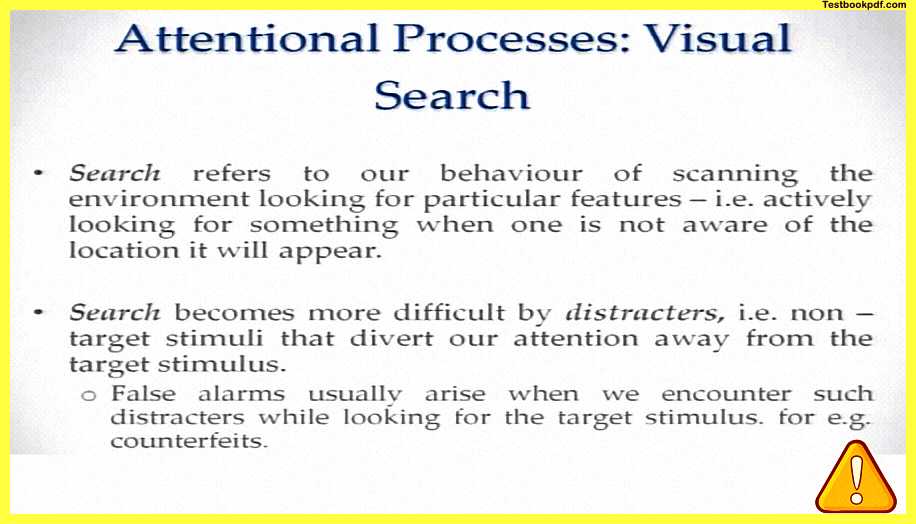
Now the distinction between attention over to encode is basically that you use your eyes to select something specifically maybe your eye works as your spotlight so if you move your eyes and then you shift your attention from one place to another from one object to another that is what is called overt attention so over detention is basically one that involves movement of eyes and by virtue of movement of ice you’re selecting some information covert attention, on the other hand, is that you’ve not really moved your eyes but your attention somehow has shifted from that specific place to another specific place or from that specific object to another specific object.
Now that is also possible sometimes we think that you attend only by virtue of your moving eyes but there have been loads and loads of studies some done in my own lab where we see that to shift your attention and to start processing objects that are not really in front of your eyes you might not need to move eyes.
So much you can attend to things that are not in your direct line of vision as well so there are these four kinds of attention I talked to you about the two kinds the dichotomy between selective attention and the divided dimension and the second kind of thing i talked about was overt attention versus covert attention here is an example say somebody again something about it from Goldstein is somebody is walking on the beach and they are actually doing some kind of it’s something like if you go on a walk somewhere.
For example, some object lying somewhere grabs your attention and you look at it that is your overt attention you are actually looking at that object but you are also conscious that there is somebody passing by maybe there is a bird flying in the sky that is your over potential you’ve attended that as well also say for example you are saying for example focused on walking on a particular path you’re kind of navigating that path and not falling into and bumping into objects.
So you’re doing selective attention you’re using selective attention to navigate your path as well the second thing what you’re doing is you’re basically also attending to maybe a song that is playing in your earphones so you’re having divided attention between that object between the song that is playing in your earphones and the path so all of these four kinds of attention are constantly operating when you’re interacting with the environment when you’re doing any particular task and that is how the nature of attention is so in today’s lecture i will focus on very specific example very specific application of attention which will help you realize all of these four kinds of things.

Now one of the most important things that we do use attention for is search behavior search or visual search refers to our behavior of scanning the environment and looking for particular features say for example I ask you to look for a red jacket amongst all of the jackets I have put in my wardrobe so you’re looking for a specific feature you’re looking for a specific object in the environment so you’re actively looking for something when one is not aware of which location you’ll find say for example you look looking into a wardrobe that is completely filled with clothes so you have to kind of scan everything pick up something and then you give it to me that is what you achieved at the end of your search now search becomes difficult and it may it’s made more difficult by the presence of distractors.
False Alarm
Now distractors are not the target stimuli but they divert our attention away from the targets say for example I’ve asked you to bring a red jacket but there’s a pink and a maroon jacket also lying somewhere in the middle and a lot of times it might happen due to lighting conditions that you might ping up pick up a pink jacket or maybe pick up a maroon jacket and then say that maybe that is something which is the red jacket it will kind of reduce your accuracy towards selecting the red jacket so when say for example you’ve picked up a maroon jacket instead of a red jacket that is called the case of false alarm.
You’re usually connecting something that is not really the target the number of targets in distractors affects the difficulty of the task if I ask you to find a city with the letter t amongst the two panels I am going to present it to you right now you’ll find that the interesting thing is that a display size that the number of items given in a visual array will affect the search process so I’ll quickly go to that.
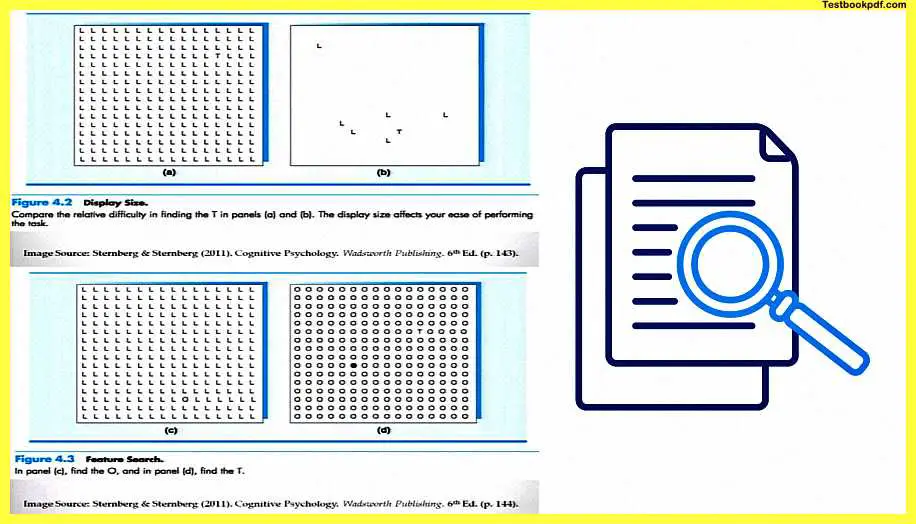
So now if I ask you to find t in panel it’ll be slightly difficult to find t there versus if I ask you to find t in the panel number b it will be much easier so the display size the number of distractors and the number of targets that are there in a particular visual arrangement will hinder the search process too many people to search from too much difficulty you’ll experience.
Now the distractors basically cause much more trouble under some conditions than others we basically conduct a feature search when we simply scan the environment looking for a specific feature say the red jacket distractors play little role in slowing our search in this case if you are doing feature search the distractors might play a small role in doing this say for example if I ask you to find the letter o in a panel c and but that o has a distinctive form as compared to the rest of the items it will pop out.
So if you see the panel c all are else but one is o and o is very different featurely from all the else it pops out and your search performance is much better and quicker feature singletons basically which have one simple feature with have distinctive features and they generally stand out in the display and your search performance is better so when feature singletons are targets they will certainly grab our attention and even those with the presence of too many distractors on the other hand when the target stimulus has no unique or even distinctive features then it becomes slightly difficult in these situations the only way we can find such an item which we are looking for is by using what is called conjunction search.
What is Conjunction Search?
Conjunction search is when you are looking for a particular combination of features say for example if I ask you to look for a red square ok so you are looking for red and you’re looking for a square among an array of visual elements say for example the only difference between a t and l is the particular integration of line segments so the horizontal line segment is on top in the t and then bottom in the l both letters, however, comprise for a horizontal and a vertical line.
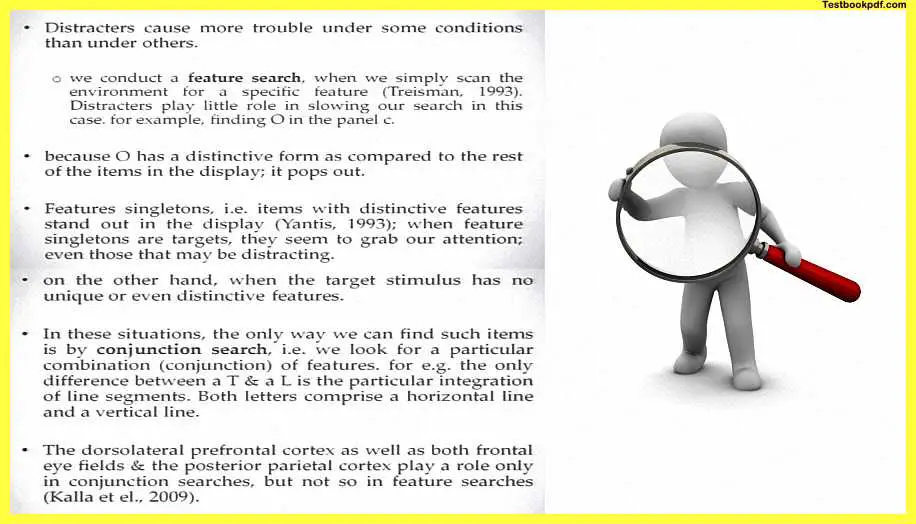
Now the dorsolateral prefrontal cortex of the brain as well as the frontal eye fields and the posterior parietal cortex are the areas of the brain that play a role in only conjunction searches but not so much in feature searches there are some theories of visual search that we can talk about the first theory is the feature integration theory.
Now the feature integration theory basically explains the relative ease of conducting feature searches and it talks about the relative difficulty of conducting conjunction searches Treisman gave this model of visual search and it says that each possible feature of a particular stimulus each of us has a mental map for representing these features across a visual field so for each possible feature we will have some mental map and then we will select each of these switches according to that mental map say for example there will be a map for every color for every size shape or orientation so there is no added time required for additional cognitive processing thus during feature searches we monitor only the relevant features we are not really looking for everything else we are just looking for the red as soon as we spot red we collect it this is easy and this is useful for feature search.
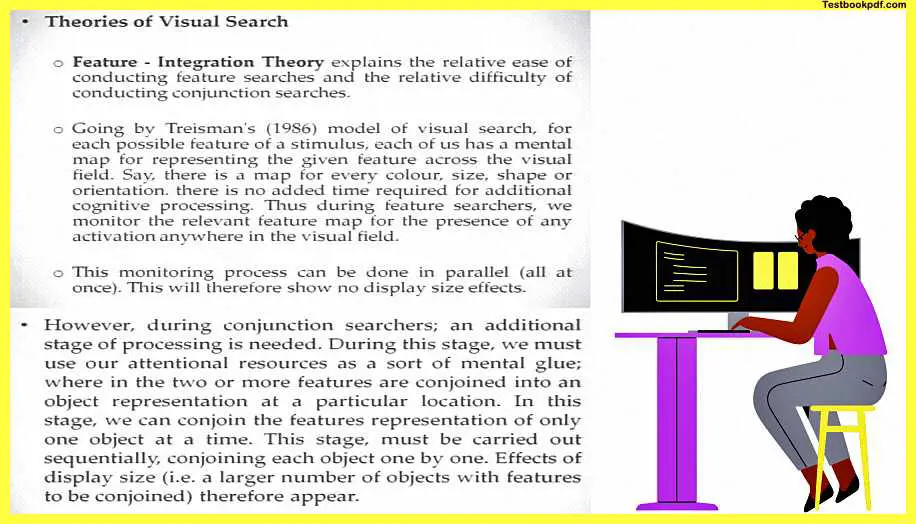
So during feature searches we monitor the relevant feature map for the presence of any activation anywhere in the visual field we quickly find it and we select it and our search is complete this monitoring process can be done in parallel and this will therefore show no display size effects because whatever the display size if the target has a distinctive feature and you can look for the distinctive feature your case is easily solved however during conjunction search it becomes slightly difficult because an additional stage of processing is needed during this stage we must use our retention sources as a sort of a mental glue so what you have to do is you have to look for one feature and the other feature and then combine them to look for both features together in a particular object so what you are doing is you are actually looking for two or more features conjoined into what it is an object representation and you have to look for a particular location in this stage what we what happens is that we can conjoin the features of features representation of only one object at a time.
Now this stage must be carried out sequentially conjoining each object one by one so you look for the first feature look for the second feature and then you’ll try and conjoin and then check the effects of display size, therefore, will definitely appear in this kind of thing because this is a slightly cumbersome process such a model of visual search the one we were talking about has been supported by the work of Hubel and weasel in 1979 they identified a specific neural feature detector so they found that there are specific neurons in our brain that only code for specific features say for example there could be cortical neurons that will respond differently to visual stimuli of particular orientation so there will be a set of neurons that will only react to straight lines there will be set of neurons that only react to horizontal or diagonal lines.
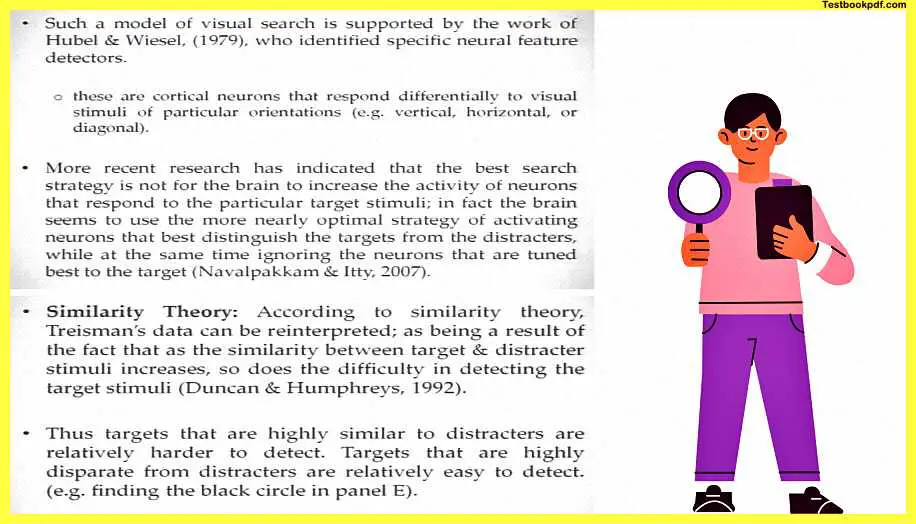
Now more recent research has indicated that the best search strategy is not for the brain to increase the activity of these neurons that respond to particular target stimuli in fact what the brain does it it seems to use a more optimal strategy of activating neurons that best distinguish the targets from the distractors while at the same time ignoring the neurons that are tuned best to the target so for example the brain is kind of optimizing its search algorithm and it’s saying that you have to find the neurons that will distinguish this particular target from all the other targets and not really the neuron that is only looking for that specific feature and is tuned to look for that specific feature you will see this with this has particular advantages the other theory you can talk about is the similarity theory according to similarity theory treasment’s data can be reinterpreted how it can be reinterpreted as being a result of the fact that similarity between target and distracted stimuli increases the so does the difficulty in the detecting time would increase if the target and the distractors are very similar to each other say for example if you are looking for a red triangle in a visual array which has all the other red objects then it will be more difficult to look for the red triangle it’s a very simple thing in that sense.
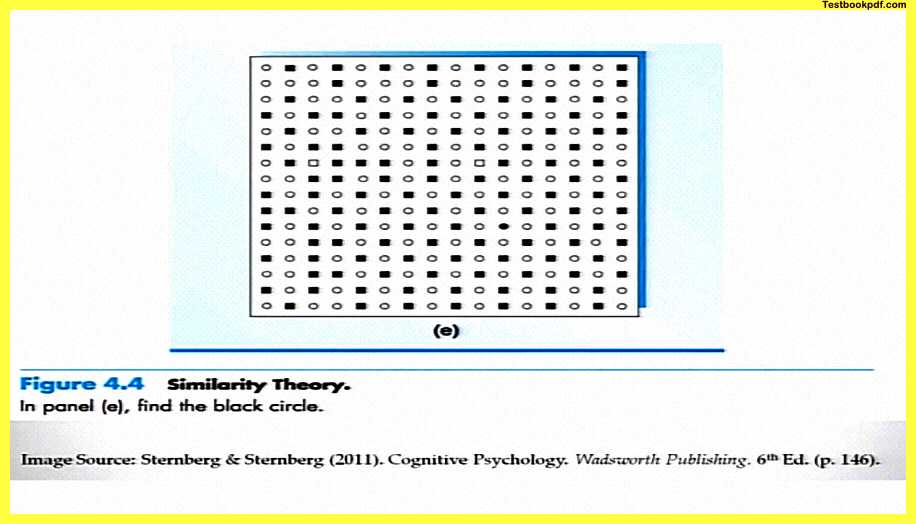
So targets that are highly similar to the distractors are relatively harder to detect targets that are highly disparate from the distractors are then relatively easy to detect say for example if I ask you to find a black panel in the black circle in this particular panel you might be able to find this out slightly easier because all the other circles are white target is highly similar to the distractors here because you have black circles black squares and white circles so it might be relatively difficult to find this black circle in this kind of a panel if it were only consisting of these circles then might be it would be easier.
Now the difficulty of the search task also depends upon the degree of disparity of the distracted so how disparate they are are they displayed by one unit or two units if there’s a way of quantifying that but it does not depend on the number of features to be integrated so it’s not really about one feature to feature those kinds of things it is how different how disparate the distractor is from the target, for instance, one reason it is easier to read long strings of text written in lower case letters than text written in is that capital letters tend to be more similar to each other in appearance.
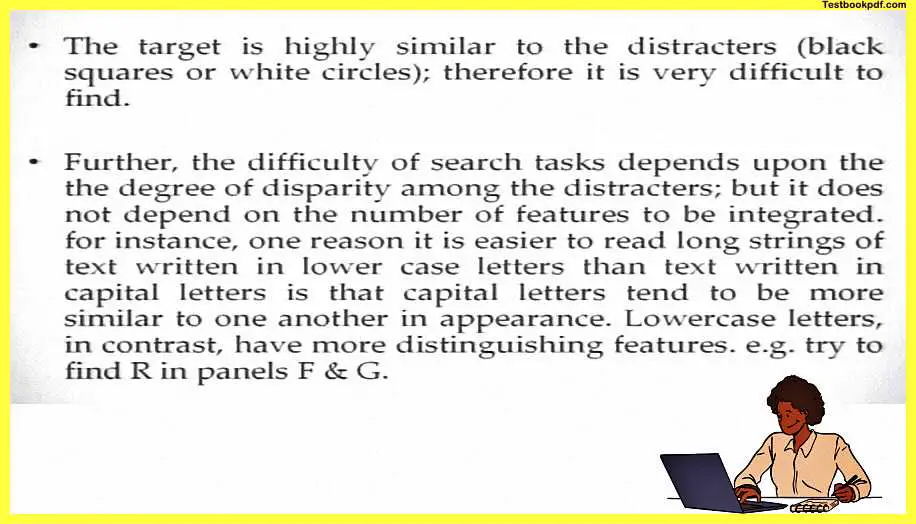
So if you’re kind of reading a particular message everything is in caps lock then you’ll find it slightly difficult your reading times will get predictably slower if you’re reading a smaller case lowercase letters like we read texts and books it becomes that much easier say for example try to find r in panels f and g here trying to find capital r that is in parallel f is slightly more difficult than trying to find capital r in panel g here again something borrowed from Sternberg and Sternberg.
Now another theory the final theory that we could probably talk about is the guided search theory now guided search theory basically came as an alternative to treatment’s feature integration model and it was given by Kevin Wolfe in Wolfe in 2007.
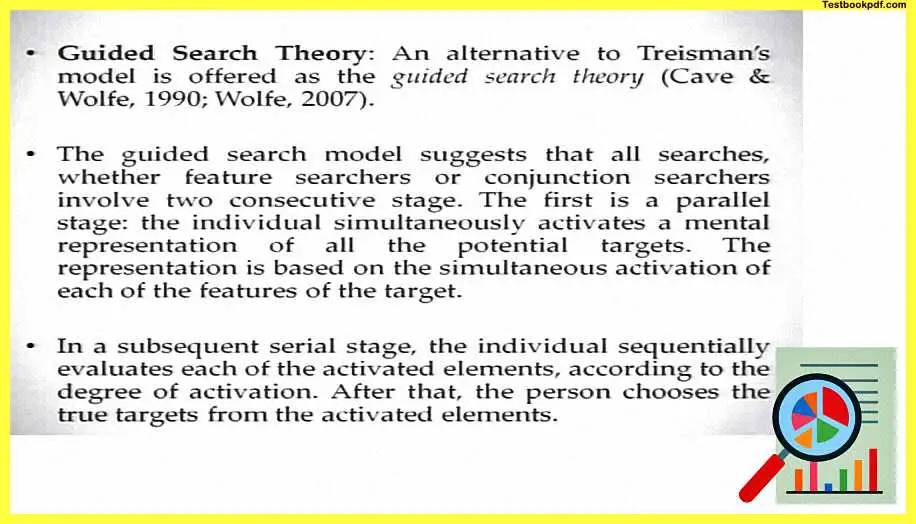
The guided search model suggests that all searches whether feature searches or conjunction searches involve at least two consecutive stages what are these stages the first stage is a parallel stage individual wherein the individual is simultaneously activating a mental representation for all the potential targets the representation is based upon the simultaneous activation of each of the features.
So if I am asking you to find me a red filled triangle red and filled and triangle are three features and you will kind of you will have a mental map of each of these features and you’ll see what are the levels of activation of each of these features when you’re looking in a visual area when you’re searching a particular visual area in a subsequent serial stage that the second stage the individual sequentially evaluates each of the activated elements according to the degree of activation that’s what needs to be done that’s what i was saying after that the person chooses the true targets from the activated element.
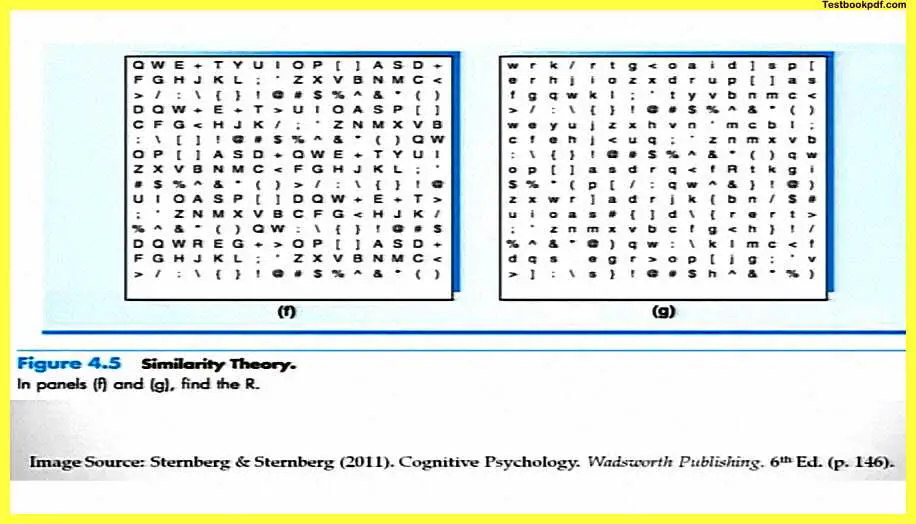
So you will say for example have a feature representation for all the individual elements in the array then you have you will have a specific activation for each of these features and from there you will be able to select the actual target according to this model the activation process of the parallel initial stage that was the first stage helps to guide the evaluation and the selection process of the serial and second stage.
For example, if I ask you to try to find the black circle in panel h here if I am trying to find ask you to just find a black circle in this particular panel this parallel station.
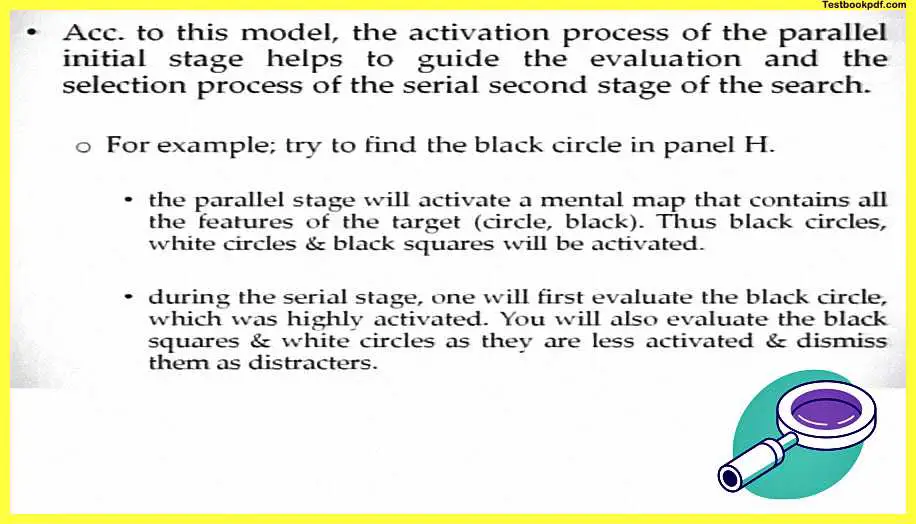
The first stage will help you activate a mental map that contains the features of all the features of the target so that it is black that it is circles so thus black circles white circles and black squares will all be activated because they share some feature with the two features you’re looking for during the serial stage that is the second stage one will first evaluate the black circle which was highly activated and you will also evaluate the black squares and white circles as they are less activated and then dismiss them as distractors.
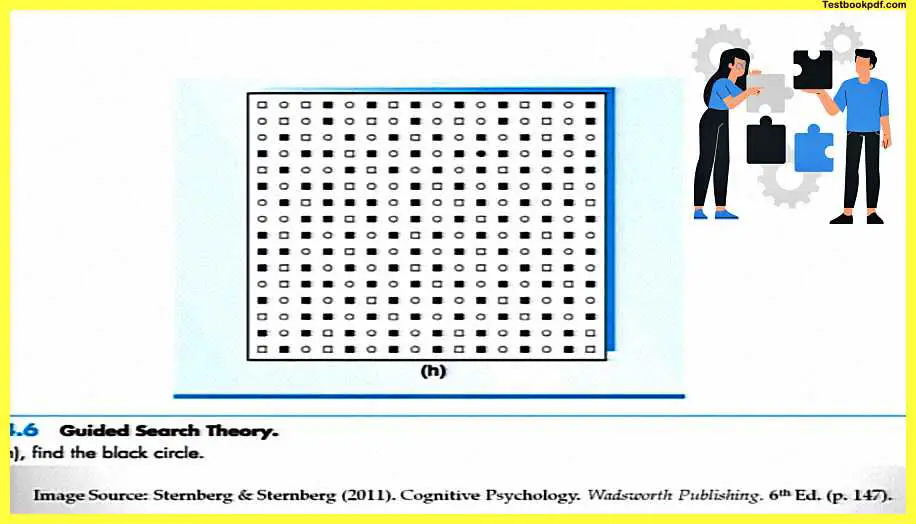
So, this is again one particular model of searching for particular items from the visual array that is all for today in the next lecture we will talk about some other important aspects of attention thank you.
Read also:
Perception and Action Psychology

